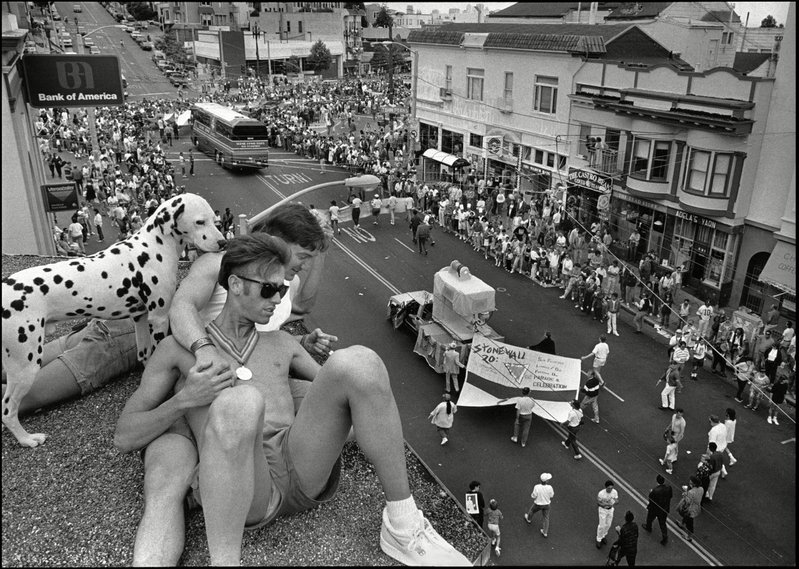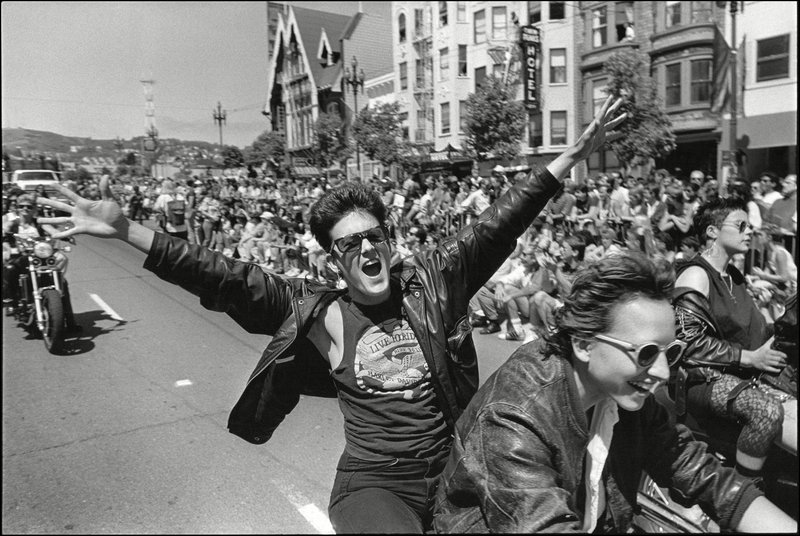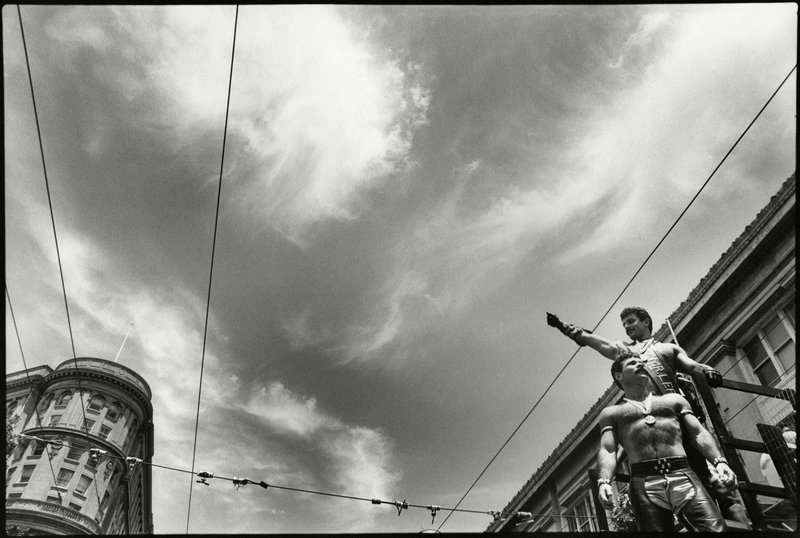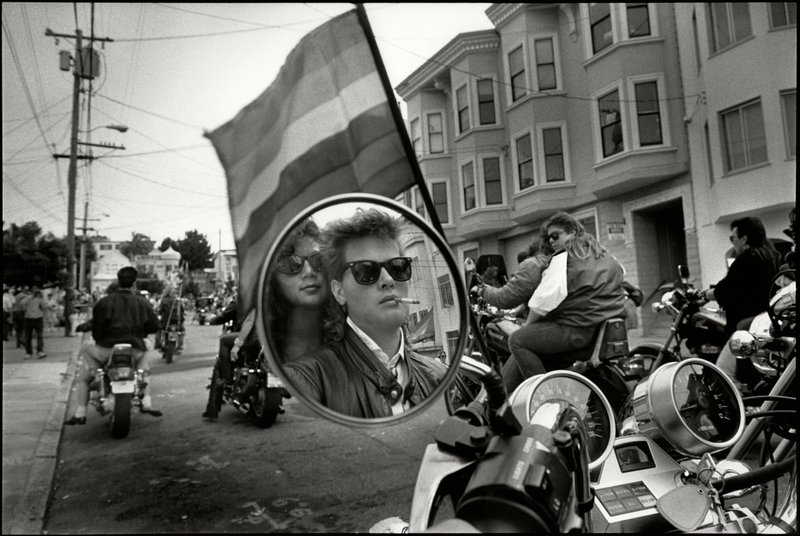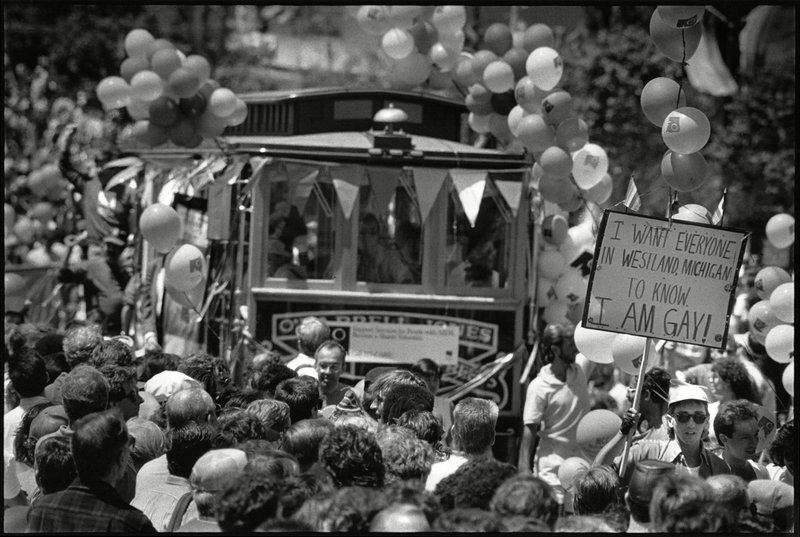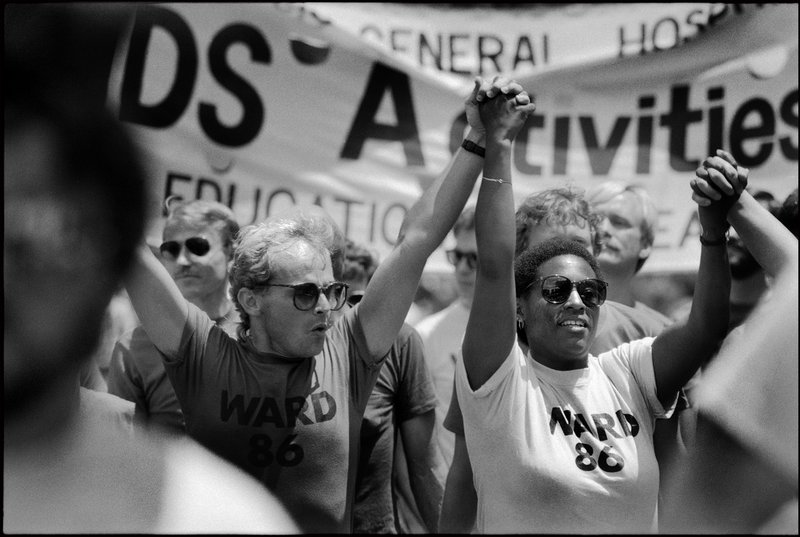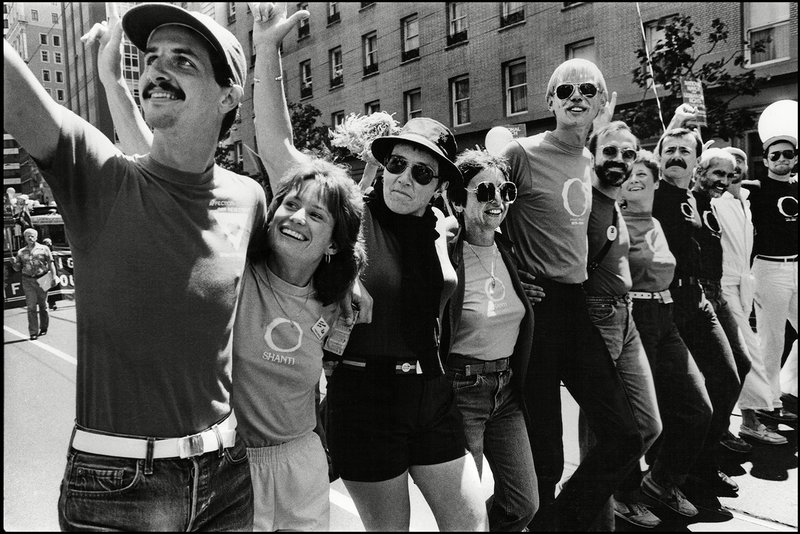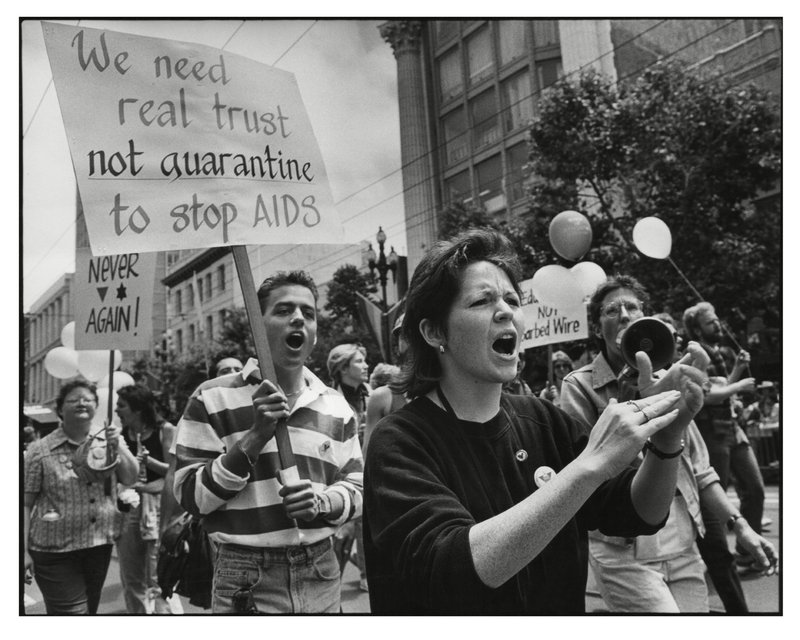Saul and Sandra: PRIDE - Hearts of the Movement
PRIDE - Hearts of the Movement:
The San Francisco Gay & Lesbian Freedom Day Parade: 1984-1990
This documentary photo essay is about the time in the 1980's when the San Francisco Bay Area's gay community was uniting as it was fighting for its civil rights and marching for equality - a group of people fighting injustice, discrimination, a constant assault on their relationships, their humanity, their culture, the horrific impact of AIDS, and their lifestyles by discriminatory groups, restrictive governmental laws, and religious organizations. These were times in the USA when gays and lesbians often had to be courageous to even attend the Gay Parade,' because unlike these days when so many corporations have their employees march with pride and with their support, back then people could lose their jobs if they were seen by their bosses and colleagues at the parade. This was a time when gay people were beat up in hate crimes, couldn't get housing or work, and same-sex marriage wasn't legal yet. Gays and lesbians were afraid to come out of the closet and be who they are to their families, friends, and at work which is still happenings in many parts of the USA. Currently, people around the USA are generally more open minded about equality for LGBTQ people and our project isnow a historical document of where the gay community was during the 1980's - how it united, how it came together to fight AIDS, and how for one day during the year people could express their love for one another openly.
It was 1984 and I (Saul) remember how during the first half hour of being at my first San Francisco Gay Parade, on Market Street, with the sidewalks packed with people with their energy and enthusiasm, I heard the Cindy Lauper song, “Girls Just Want to Have Fun”. Ten men and women danced to it while a cable car as it was coming up the street.
In these moments and throughout that day, I remember being engulfed with emotions and the feeling that the LGBTQ community was being unjustly assaulted and discriminated against, that the people in this community had to hide who they truly identified as, and that I, a 26-year old photographer working at a newspaper in Hayward, CA, could produce a photo essay that would document the LGBTQ community through photos taken at the Gay Parade with authentic moments packed with emotion and tell some of its story.
It was a challenge really. As an outsider, an ally, but still an outsider, could I do this? Did I have the talent, the storytelling skills, the needed persistence?
I had studied many of the truly great documentary photographers such as Eugene Smith, Bruce Davidson, and Mary Ellen Mark, and my question was, 'Can I come up to their level of high quality, emotionally charged photographs that will move people emotionally to a more informed understanding and awareness about the LGBTQ community and gain empathy for it if they didn’t already?’
After we met, we worked together on this photo essay for the next six years on every last Sunday in June when the San Francisco Gay Parade was happening. We focused on capturing the real moments of love and relationships that we witnessed, how the community was coming together to fight AIDS, and how it was fighting for its equality.
Our intention was to be close to the people, ‘get closer and then closer’ we kept saying, and ‘then take a step back and see the whole scene’. We committed to doing this over and over again, to connect with the community and to tell this story.
We intentionally chose to not use a long telephoto lens very much, just enough to give the project variety. We knew that by using wide angle lenses we could achieve a level of intimacy and trust that a long lens could not.
This came about when we saw photos in the San Francisco newspapers that we felt missed the whole point of the Gay Parade, when instead of focusing on people of the same sex loving each other openly, the coverage was often by men with long lenses who focused on the extravaganza and the nudity of the parade. Indeed, these elements were part of the parade, but not the essence.

